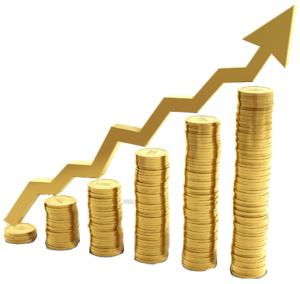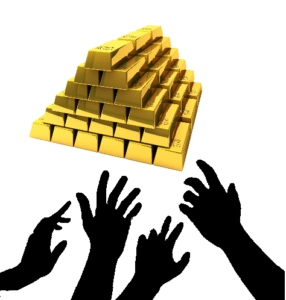How Has The Price of Gold Changed Over The Years?
Gold is a precious metal that has been used as currency, jewelry, and other decorative items for centuries.
Its value has fluctuated over the years, but it has always been considered a valuable commodity.
The price of gold began to rise in the early 2000s, and it hit an all-time high in 2011. Since then, the price has fluctuated but has remained relatively high.
So what factors influence the price of gold?
Factors that influence the price of gold include the U.S. dollar, real interest rates, equities, inflation expectations, Central Bank purchases and geopolitics.
Because Gold has historically been viewed as a safe haven asset for investors when other investments are performing poorly, it often experiences increased buying during times of market turmoil.
Here are a few reasons why gold prices may be influenced:
Economic Conditions
The economy can also affect the price of gold.
For example, an unstable economy means that people are less likely to spend money on gold, so the demand goes down and the price goes down.
When the economy is doing well, more people tend to invest in gold, so the prices go up.
Currency values
Gold is often used as a hedge against inflation.
This means that when a country’s currency is losing value quickly, investors will buy gold as a way to protect their money.
This increases the demand for gold, and drives the price up.
Gold is often used as a hedge against inflation
This means that when a country’s currency is losing value quickly, investors will buy gold as a way to protect their money.
This increases the demand for gold, and drives the price up.
Learn more about Gold as a hedge against inflation
 Political conditions
Political conditions
The political stability of a country can also affect the price of gold.
For example, if there is a lot of political unrest in a country, investors may sell their gold holdings and invest in other commodities instead.
This would cause the price of gold to go down.
![]()
Technology
The development of new technologies can also affect the price of gold. For example, if a new type of metal is invented that is stronger and more durable than gold, its price could go down.

Interest Rates
The Federal Reserve’s interest rate policies have an impact on the price of gold.
When the Fed raises interest rates, it becomes more expensive to borrow money. This can lead to a decrease in the demand for gold, and cause the price to go down.
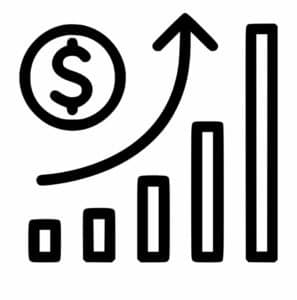 Inflation
Inflation
Inflation is another factor that can affect the price of gold.
When inflation goes up, it becomes more expensive for people to buy commodities, including gold.
If investors expect inflation will go up in the future, it can cause the price of gold to go up.
Investment Demand
Similarly, the level of investment demand for gold can also affect its price.
When investors are bullish on gold and think the price will go up, they will buy more gold. This increases the demand and pushes the price up.
Similarly, the level of investment demand for gold can also affect its price. When investors are bullish on gold and think the price will go up, they will buy more gold. This increases the demand and pushes the price up.
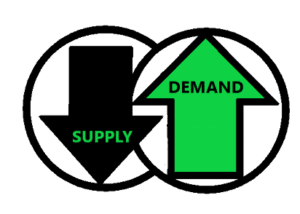
Supply and Demand
Finally, the supply and demand for gold can also affect its price.
When there is a lot of gold available, the price goes down. And when there is less gold available, the price goes up.
Gold is often seen as a stable investment, and its value usually remains relatively consistent over time.
Gold is a very valuable and precious metal. Over time, its price has gone up and down like any other product or commodity on the market, but it has experienced a relative consistency when compared to other products and commodities.
The history of money includes anything from seashells to cigarettes, but gold has always been a valuable commodity.
The price of gold is constantly changing, as is the value of other products and commodities.
However, when compared to the ever-changing stock market or even housing prices, the price of gold has remained relatively stable.
What does the spot price of Gold mean? How is it calculated?
The spot price of Gold is the current market price at which gold may be bought or sold.
It is determined by taking the average of buy and sell prices from global markets.
What are the Different Types of Gold Investments?
There are a variety of ways to invest in gold, including buying physical gold, buying shares in a gold-focused mutual fund or ETF, investing in gold mining companies or buying derivatives contracts that give investors exposure to the price of gold.
What Are The Benefits of Investing in Gold?
Gold is often seen as a safe haven asset during times of market volatility, providing stability to an investment portfolio.
It is also a tangible asset that some investors prefer as its value is independent of the financial conditions of a country.
Gold also does not bear interest or have a maturity date, which means there are no required cash flows, making it easy to own, and offers complete liquidity at any time.
What are Gold Futures? How do they work?
Gold futures contracts are a way for an investor to speculate on price movements and potentially generate cash income if they go along with the trade.
A futures contract is an agreement between two parties: one who agrees to buy, and one who agrees to sell, a specific asset or quantity of assets at a predetermined price, with delivery occurring at a specified future date.
Think of it as a bet on the future price of Gold.
What Is the Role of the Futures Markets in Setting the Price of Gold?
The futures markets can play an important role in setting the price of gold.
When investors buy or sell gold futures contracts, they are betting on how the price of gold will move in the future.
Gold futures are part of commodity markets where investors trade contracts to buy or sell physical gold.
The price of gold futures is based on supply, demand and other factors that influence the value of the underlying asset – which in this case is gold.
How can I invest in Gold?
There are many ways you can invest in Gold, including buying physical Gold, investing in a Gold-focused mutual fund or ETF, purchasing shares in a Gold mining company or buying derivatives contracts that give you exposure to the price of Gold.
How do I Buy Physical Gold? Does it have to be in the Form of a Bar or Coin?
There are a few ways you can buy physical Gold, including buying coins or bars from a dealer, buying shares in an exchange-traded fund (ETF) that focuses on Gold or mining companies, or investing in a mutual fund that specializes in Gold.
When purchasing physical gold, make sure you are aware of the weight and purity of the product you’re buying, as well as any associated shipping and insurance costs.
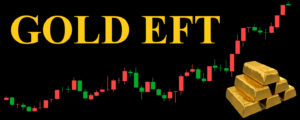
What Is a Gold ETF?
A Gold ETF is an exchange-traded fund that invests in physical gold.
This type of investment vehicle allows investors to gain exposure to the price of gold without having to store and insure the physical asset.
Gold ETFs are listed on stock exchanges and can be traded like stocks.
What is a Gold mining company?
A Gold mining company is a company that extracts, processes and sells Gold.
Many of these companies also produce other metals, such as copper and silver.
Investing in a gold mining company is another way to gain exposure to the price of gold.
How do I Invest in Gold using Derivatives? What Types of Derivative Products Exist?
You can gain exposure to the price of gold using derivative contracts, which are financial instruments that derive value from an underlying asset.
Some common types of derivative contracts include futures, options and swaps.
What is a Gold option? How does it work?
A Gold option is a contract that gives the buyer the right, but not the obligation, to buy or sell Gold at a predetermined price on or before a set date.
The price of the option is determined by supply and demand as well as the time remaining until expiration.
What is a Gold swap? How does it work?
A gold swap is an agreement to exchange cash flows with another party based on an agreed-upon notional amount (amount to be exchanged).
The agreed-upon notional amount is re-priced at the end of each period and any change in its value is settled by exchanging the cash flows.
Gold swaps are typically traded over the counter (OTC) and can give investors exposure to physical gold with less capital outlay than buying and storing the physical asset.
What are The Risks Associated With Investing in Gold?
Like any investment, there are risks associated with investing in Gold.
These include the risk of price volatility and the potential for a loss if you sell your Gold holdings at a lower price than you paid for them.
Below are the Top 4 Precious Metal firms that we have chosen, as being amongst the most reputable Gold IRA companies in the industry.
Click here to read our reviews.

|
The Bottom Line
Gold is a good investment in uncertain times.
It has been the oldest form of currency and for this reason, it’s not going anywhere anytime soon.
Gold is one of the most valuable metals on earth.
The price of gold fluctuates constantly, so it’s important to understand how different factors can affect its purchase value.
I hope this article has been informative and helped you better understand the role that these factors play in determining the value of gold.
